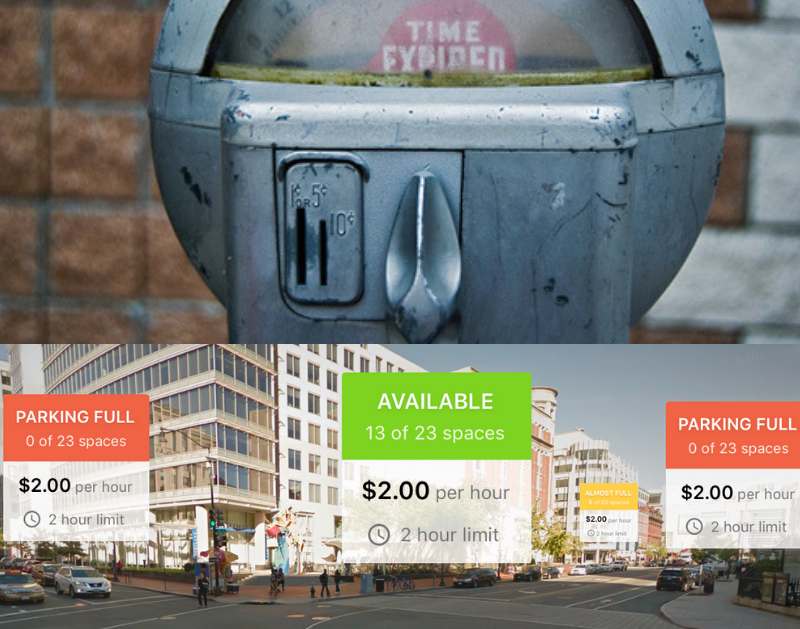
One of the most relevant tools for those interested in Smart City technology is an apparently simple one: the parking meter. The evolution of the parking meter is an important concept to understand for cities who want to proactively approach parking issues, save time and money spent on the upkeep of traditional parking meters, and make parking more efficient. The parking meter has been in use for over 80 years and has seen numerous design changes due to the demand for more technologically friendly equipment in cities. The parking meter has evolved from a simple mechanical instrument to a series of sensors underneath parking spaces that accepts payment through a user’s smartphone. This innovation is all thanks to the rapidly expanding Smart City and IoT technology, which has changed the game when it comes to commonly used urban tools like the parking meter.
To grasp how far the parking meter has come, and how Smart City technology has impacted this evolution, it is helpful to look at a brief history of the parking meter. First installed in 1935, the original parking meters were machine-operated tools used to cash-in on storefront parking. These initial meters were a huge success, and their use spread rapidly throughout the next two decades. The next big change came in the 50s, when cities started hiring parking enforcement officers to enforce the parking meters. Parking enforcement took the place of police officers, who could no longer spare the time to watch over the growing number of metered spaces. As technology continued to advance and the 80s brought a technology revolution, parking meters were quick to adjust. This adjustment brought battery-powered meters into the mix, making them part of the digital wave sweeping over the world. These battery-powered meters saw minor changes throughout the years as cities and private companies sought to increase the efficiency of these tools. Now, many cities have numbered spaces and a kiosk where customers can type in their space and the amount of time they will be there and pay using nearly any method. While the parking meter has seen many changes and has grown into a far more useful tool than before, there is always room for improvement.
Smart City companies such as Fybr offer the next generation of parking meter, where the parking meter is no longer a visible tool, but one sitting underneath parking spaces. Fybr uses sensors beneath the ground which monitor when a vehicle has parked in a given spot, making monitoring a digital process rather than a physical one. Cars park in their given spot and pay using an app on their smartphone, improving the experience for both the customer and the city. Customers can pay for their spot digitally, allowing them to lengthen their time in a given spot through their phone rather than going back to a kiosk or parking meter to enter more money. The city then has real-time information they can use to enforce illegally parked cars, because when a car’s time expires it is sent digitally to the city rather than checked via a parking enforcement officer. Increasing efficiency and improving the customer experience with Fybr’s Smart Parking platform is a unique take on the classic parking meter evolving into a virtual meter.
About Fybr 
Fybr is the world’s leader in parking sensor management solutions, delivering real-time data to actively connect and improve communities of all sizes. Fybr helps keep traffic flowing with useful information about residents and visitors – people with individual lives, unique needs and distinct goals – not just cold, clinical numbers. Fybr's data is drawn directly from city life, with tangible applications that bring fresh energy to communities large and small - all through smarter parking.



